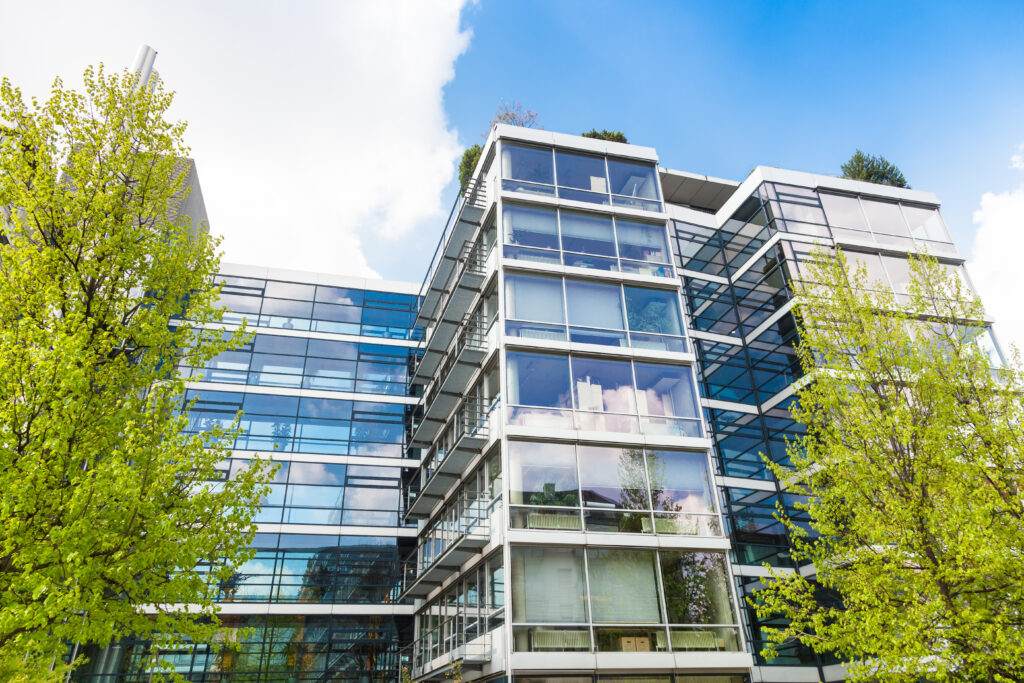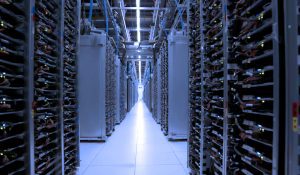Danny Davies is the president and CEO of C&C Group. As a certified master-level EcoXpert™ and proud Schneider Electric partner, C&C Group provides building automation, security, energy, and network solutions that help companies meet their net-zero goals and improve day-to-day operations. We pride ourselves in staying on the cutting edge of emerging technology and practices to ensure our clients benefit from the newest and most advanced solutions.
Buildings are living, breathing things; each has its heartbeat and rhythms. Inside its walls, ideas are born, visions grow, and success stories are written. Buildings are an integral part of our daily lives, and today, they embody the spirit of sustainability and decarbonization that we strive towards. There is potential in every wire, switch, and circuit to contribute to this systemic change. This is what guides us at C&C Group and as a Schneider Electric EcoXpert partner.

It’s our customers and our dedicated team who turn these possibilities into realities. And as we work towards this shared goal, here are five effective tactics we’ve found that can add up to a big impact.
Tactic 1: Embrace digitalization and measure, measure, measure
It’s so important to measure everything in an infrastructure: power consumption, peak demand, process energy data, control points, humidity, HVAC, and more. These measurements become the bedrock of any effective sustainability and decarbonization strategy. But before you can measure, digital technology capable of communicating with software must be installed at key points throughout an infrastructure.
Once installed, operational data can be collected, analyzed, and translated into 360-degree views that pinpoint exactly where power consumption is highest. It can highlight peak demand, identify inefficiencies, find cost savings, build resilient systems that adapt to fluctuating energy prices or extreme weather events, and help ensure compliance with regulations.
Measuring not only helps find new efficiencies but also allows users to define realistic and meaningful targets for decarbonization and sustainability. You need to know where you stand to know how you can improve.
Our collaboration with Aspiria illustrates the power of data in driving sustainability. By creating data points and measuring energy use, we could monitor progress and optimize efforts. It’s a testament to the fact that decarbonization is not an overnight process but a journey of continuous improvement. By leveraging smart meters, sensors, and building management systems, real-time data can be collected and analyzed to identify energy inefficiencies. This data-driven approach enables targeted interventions, allowing for continuous improvement in energy efficiency and carbon reduction. The result was a 16% reduction in annual energy consumption, $1.5 million in energy savings, and a 36% reduction in carbon footprint.
Tactic 2: Give people the opportunity to see the results
Never underestimate the power of a well-designed user interface (UI). Giving stakeholders or employees a window into how your strategies are working is just as important as crafting them in the first place. It proves your strategies are working. When you’re monitoring energy, building points of data, on-off temperatures, humidity, and weather data then people can see how their behavior is having an impact. Results build momentum and encourage people to repeat their behavior. They become better stewards.
It’s amazing to witness this momentum happen once people see results. It builds quickly after it gains traction. We’ve seen some great examples of this in real life with something as simple as automating light switches. While it may seem small, it has an outsized impact, dropping total energy usage in a building by up to 20 percent.
Tactic 3: Anticipate uncertainty and be agile
With the speed of technological innovation today, especially related to decarbonization and sustainability – solar, wind, and electrification – no strategy will survive the coming decades intact. Make sure to build your strategies with checkpoints to review progress and examine innovations that might influence your progress. Adaptability is a competitive advantage, and with the momentum you created behind you, it’s much easier to alter course.
Sustainability and decarbonization are helping to revitalize existing industries in real time, and there are significant benefits to jumping on the bandwagon. For example, Panasonic is building a billion-dollar battery plant in Kansas to meet demand from EV sales and energy storage. Battery technology is continuing to improve quickly as suppliers race to reduce the carbon footprint of battery creation. As we electrify our buildings, and we bring in innovation like this to keep up with growing demand, it also brings with it significant job creation, usually in the skilled trades. It brings in new companies, new people, new jobs – which leads to new housing, better communities, and so on.
Tactic 4: Embracing sustainability means budgeting proactively
Sustainable building decarbonization requires financial investment, but it also offers long-term cost savings and environmental benefits. Sustainability is becoming a top-tier budget item on many business agendas, and the majority of companies today have increased their budgets in the last year. Beyond the immediate cost savings from sustainability, there are also opportunities to tap into federal grants in the U.S. for projects qualifying as green, energy-related, or sustainability-oriented.
There’s another upside to embracing sustainability, too. A company’s carbon reduction strategies influence its reputation among customers, peers, and employees. In the eyes of today’s workforce, a company committed to reducing its carbon footprint is worth doing business with. Customers are becoming more eco-conscious. One study showed over 80% of respondents feel strongly that companies should do whatever they can to improve the environment. The world’s most sustainable corporations also outperform their peers by a significant margin, highlighting the competitive advantage gained from sustainable practices.
Tactic 5: Don’t be afraid to ask for help with building decarbonization
The path to sustainability and decarbonization can often look intimidating. Goals might seem ambitious, but they can be met. With the right strategy and approach, these goals can become a practical part of your everyday operations.
Collaborating with partners who specialize in sustainable building practices can help identify innovative solutions, overcome challenges, and accelerate progress toward decarbonization goals.
We encourage every business to embrace the advantages that new technologies bring. These innovations can transform your operations and bring you closer to your sustainability objectives. However, we also understand that navigating this technological landscape can be challenging. That’s why we’re here – to lend a hand when you need it and help you with these technologies.
Net zero, sustainable buildings are rapidly becoming the norm
The number of net zero buildings in North America has increased by 700 percent since 2012. Worldwide, net zero verified buildings are still less than one percent of all buildings, and we need a massive effort to meet sustainability targets. But with most US state and local governments pledged to net zero energy by 2045, buildings that produce as much energy as they consume will eventually become the standard, rather than the exception.
It’s an achievable goal, and we’re looking forward to working with customers and offering practical solutions to help them reach their sustainability goals. We deeply appreciate the learning opportunities our customers provide us; these insights help us provide outstanding value and service.
We also take pride in our collaboration with Schneider Electric, tapping into their expertise and advanced technology. Discover more about C&C Group’s role as a Master EcoXpert partner, our partnership with Schneider Electric, and how we used these tactics to shape Aspiria’s campus of the future.
Watch for our next blog – a deep dive into how C&C Group helped Aspiria achieve their net-zero ambitions.
EcoXperts are the enablers of net-zero buildings
The EcoXpert Partner Program is unique in its industry and made up of a best-in-class, global ecosystem of expertise. Trained and certified by Schneider Electric, EcoXpert partners digitize and electrify our world for a more sustainable future.
The path to net zero is about delivering solutions for sustainable, resilient, efficient, and people-centric buildings. For our EcoXpert partners, this unveils immense growth opportunities through the transition to end-to-end portfolio sales that will resolve our customers’ most critical needs. For our shared customers, this means that together with our EcoXpert partners, we will drive the building industry transformation and help our customers survive and thrive today – and tomorrow.
Visit the EcoXpert webpage to learn more.




Add a comment